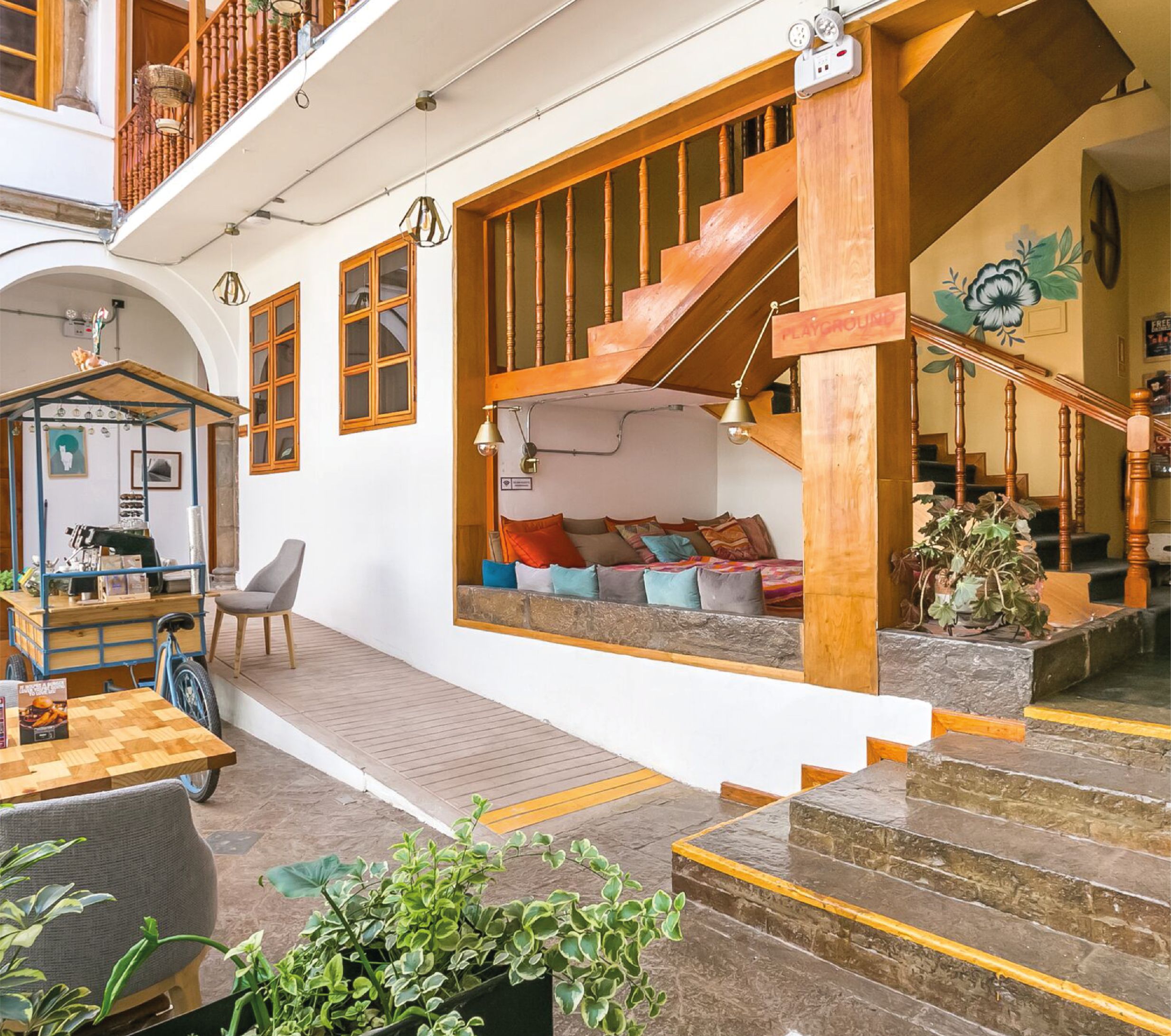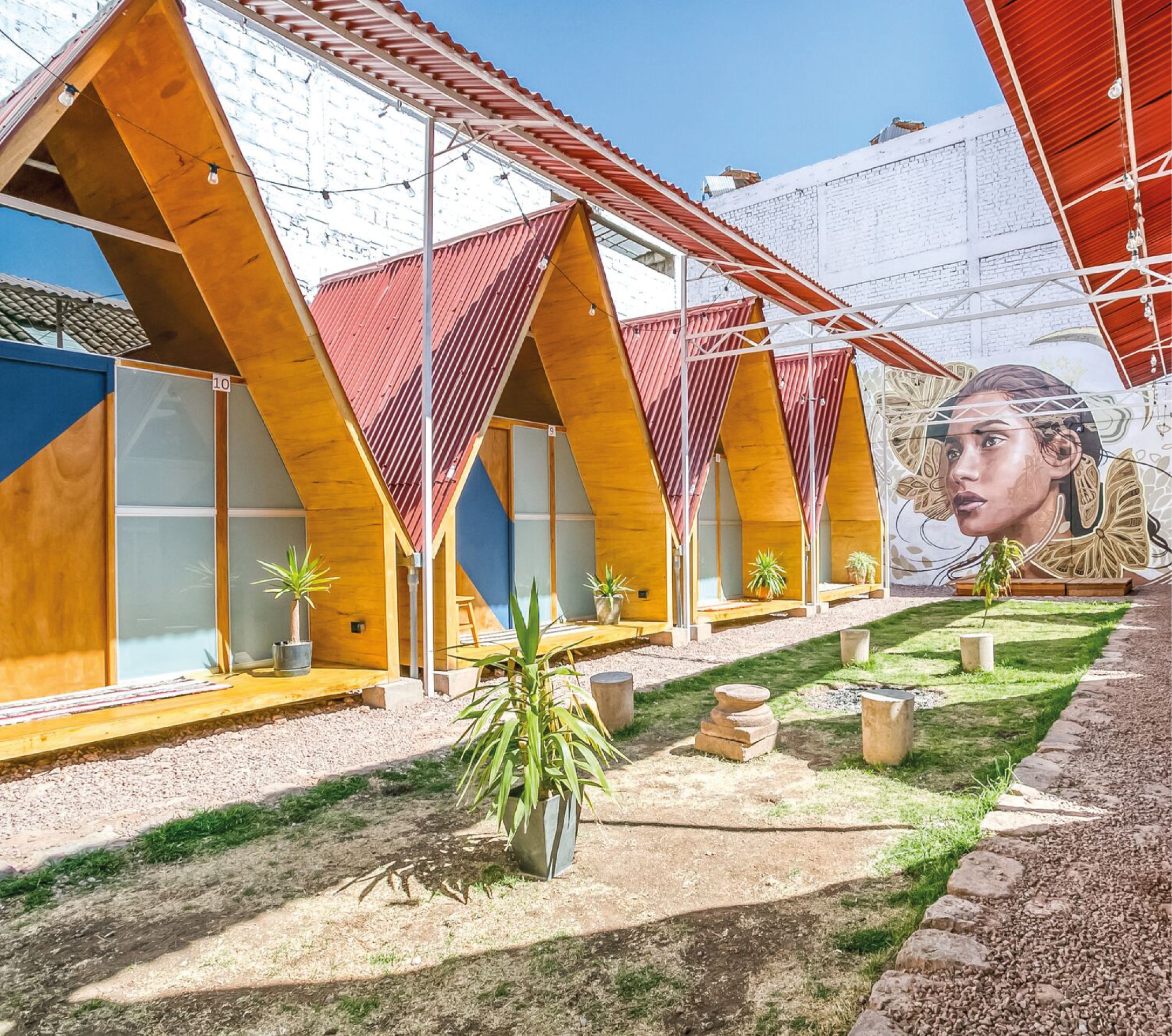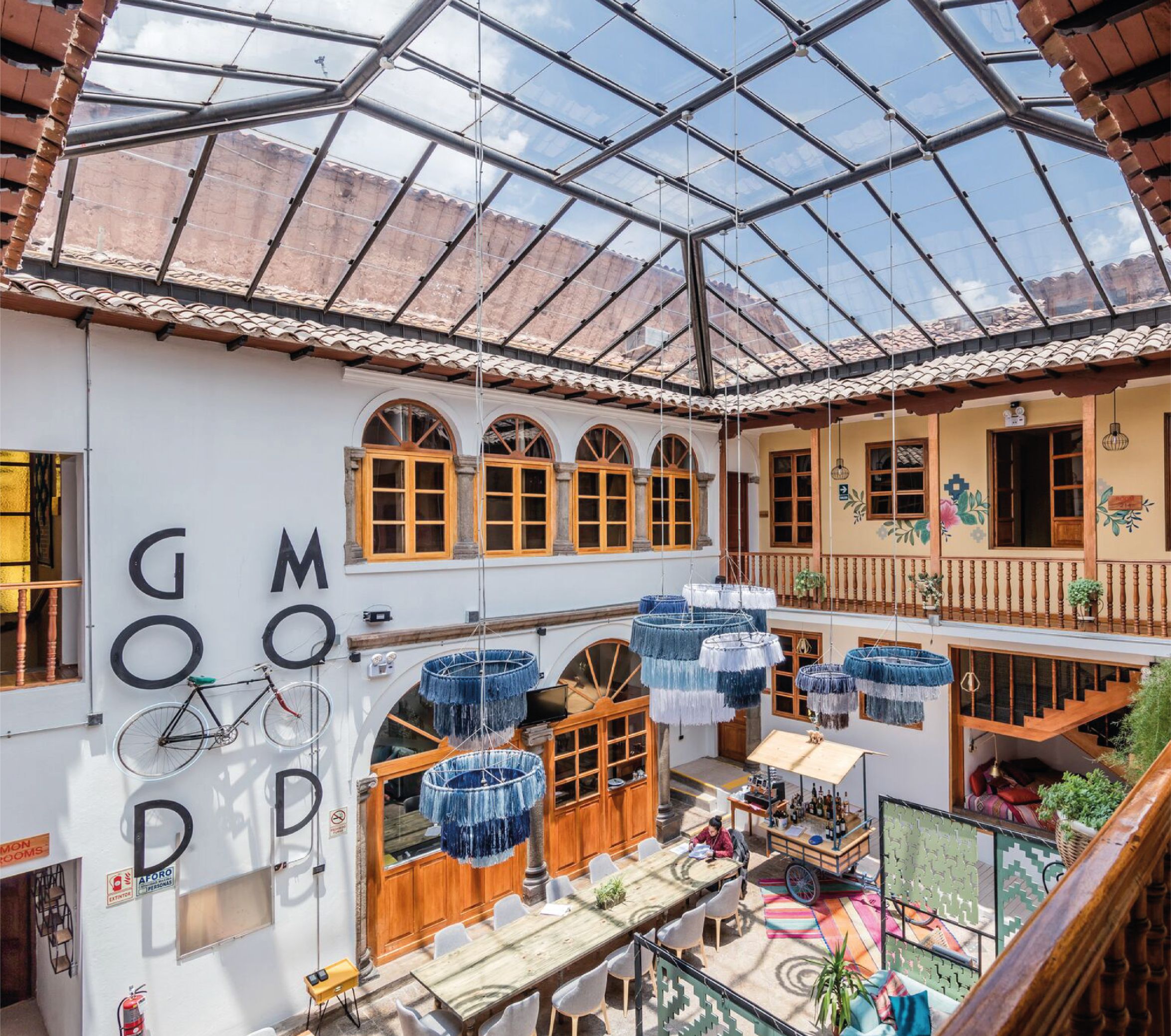Visiting Machu Picchu: Your Guide to One of the World’s Seven Wonders
Towering high above the Urubamba River Valley and located just about 50 miles from the Incan capital of Cusco, Machu Picchu Peru is a UNESCO World Heritage Site, a Peruvian Historic Sanctuary, and one of the New Seven Wonders of the World. Traveling to this iconic Incan site is part of the adventure – whether you hike in or choose another option, traveling to Machu Picchu will be unforgettable.
In this guide, we'll take a look at:
- 1. About Machu Picchu: History & Architectural Features
- 2. Cost and Fees for Machu Picchu Tours
- 3. Best time to visit Machu Picchu
- 4. Machu Picchu Weather
- 5. Nearby Towns & Where to Stay
- 6. Accommodations Options
- 7. What to Pack
- 8. Machu Picchu Facts & FAQ
- 9. Other Things to Do in the Area
About Machu Picchu: History & Architectural Features
Perched atop a steep ridge in the Cordillera de Vilcabamba of the Andes Mountains, the Machu Picchu ruins are all that remain of a 15th century Incan citadel. The ancient fortress is nestled between a pair of sharp peaks – Huayna Picchu (New Peak) and Machu Picchu (Old Peak).
Incredibly, this pre-Columbian site is nearly intact, providing archaeologists with important clues about the people who lived there. Material and skeletal remains suggest that the massive fortress and its surrounding features were built as a royal retreat for Incan emperor Pachacuti, who lived between 1438 and 1472. Tupac Inca Yupanqui, who ruled between 1472-1493, is believed to have contributed to the site as well. Construction probably began around 1450.
Evidence suggests that the royal estate was inhabited for just about 80 years before being abandoned – far shorter than many other Incan historic sites. While the mountainous retreat was never discovered by the Spanish conquistadors, historians theorize that abandonment occurred because of the conquests taking place in other parts of the Incan empire, or perhaps due to smallpox epidemics that occurred around the same time.
Even though the site is so close to Cusco Peru, the Spanish never found it as its location was a carefully guarded secret. The steep mountains that surround the royal compound, its town, and the terraced gardens were the ideal camouflage, serving as a natural fortress that prevented potential invaders from viewing the community from a distance.
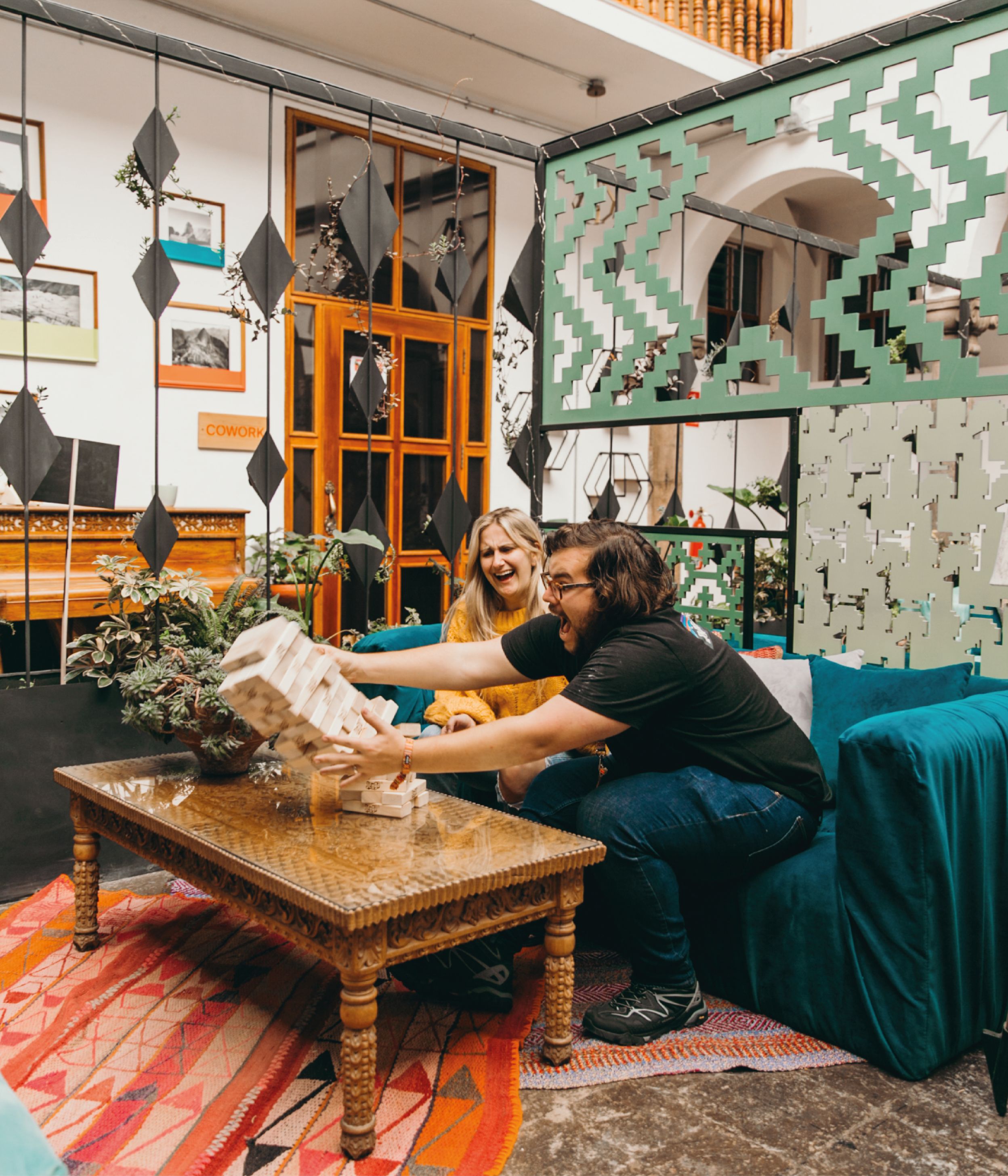
Enjoy the ultimate remote living experience and find your home-away-from-home at Selina Cusco Plaza de Armas!
In its heyday, the site was a safe retreat for Incan royals. It was a defensible fortress that could not be easily accessed, which is something that will be evident to you when you visit. Travelers had to cross bridges which were well-hidden and well-guarded. For example, the famous Inca grass rope bridge that crossed the Urubamba River was used and protected by the Emperor’s Incan army, as was the Tree Trunk bridge west of the site.
The Tree Trunk Bridge deserves special mention as it was essentially a drawbridge that was used to prevent outsiders from accessing the mountain even if they did manage to find their way onto the Inca Trail and make the trek without encountering Incan forces. This unique bridge spanned a 20-foot gap in the carved cliff edge that serves as the trail. The tree trunks that formed the bridge could be removed to prevent outsiders from invading, and the strategy was an incredibly effective one: There was no other way for unwanted visitors to get around this gap since the cliff’s drop is an astounding 1,900 feet. Falling meant certain death.
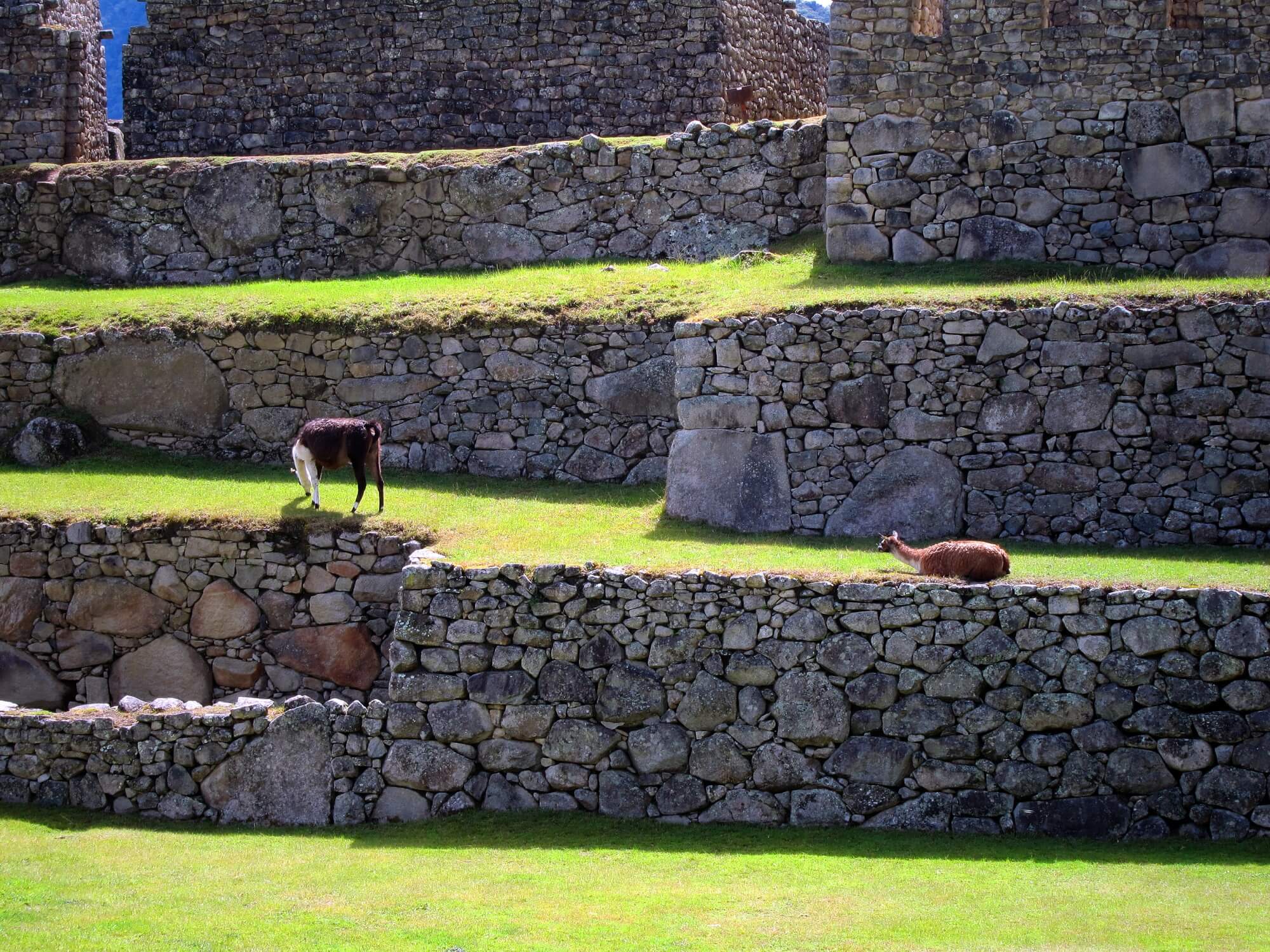
You’re likely to encounter llamas grazing on the terraces at Machu Picchu.
Prominent Features
When visiting the site, you will notice that the structures are built with dry stone walls in classical Inca style covering an area that consists of approximately five square miles. Many of the buildings at Machu Picchu have been reconstructed using the original elements and dry Ashlar masonry techniques used by Incan builders. This technique called for precisely positioning oddly-shaped stones together like pieces from a jigsaw puzzle, with no mortar. As you’ll see when you visit, there is no room for anything to fit between the stones; when the construction was new, not even a hair could fit. The windows and doors have a unique trapezoidal outline that enhanced stability.
In total, the complex consists of approximately 200 buildings, each with a specific purpose. Among the houses and smaller outbuildings, larger warehouses and intriguing bathouses, three major structures stand out. These are the Temple of the Sun (Torreon), the Intihuatana, and the Room of the Three Windows. Of these, the Torreon is perhaps most impressive; it is an immense structure that may have doubled as an observatory. All three of the main structures on the mountain were dedicated to the sun god Inti.
The site’s urban section is divided into an upper town and a lower town. As you may have guessed, the temples are located in the upper town. A massive square divides the ceremonial portion of the old citadel from the residential portion.
The lower town was used for more mundane purposes; for example, you’ll find the remnants of warehouses there, along with simpler houses that were probably occupied by lower-class people. The entire site features massive terraces on which compounds called kanchas were built. Stone stairways lead from one level to the next. In total, there are more than 3,000 stairs connecting the terraces to one another, and it’s easy to imagine ancient people going about their day-to-day business as you explore.
There are several other prominent structures to see when visiting Machu Picchu:
- The Sun Gate or Intipunku, which once served as the main entrance to the city. This was probably guarded as it has large windows and like other structures, it was originally equipped with a thatched roof. A system of stairs leads to the entryway, and historians believed that these were used as a further method of controlling access into the city.
- The Royalty Area, which consists of a group of large houses higher up on the slope, offering amazing views of the river and valley far below.
- The Wise Persons (Amautas) residence, with its reddish-colored walls.
- The Princesses Zone, with unique trapezoid-shaped rooms
- The Guardhouse, a three-sided structure with one side that opens onto the Terrace of the Ceremonial Rock.
- The Mausoleum, which was used for sacrifices and other rituals, and which features intricate carvings and a fascinating vaulted interior.
- Inti Mach’ay, a cave that was used primarily for celebrating the royal Feast of the Sun.
- The Intihuatana ritual stone, which was instrumental in observing the sun’s path throughout the year.
- The Sacred Plaza and Main Temple, which features polished, carved walls that are more elaborate than many other buildings found throughout the site.
- Temple of Three Windows, also located on the Sacred Plaza, next to the Main Temple. Each of the three windows are believed to represent one of the Incan worlds: Uku-Pacha, Hanan-Pacha, and Kay-Pacha.
- The Stairway of Fountains, which provided the citadel’s inhabitants with clean water for drinking and bathing. The water was channeled down from freshwater springs higher up. It made its way down several channels and into 16 fountains, the first of which was located at the emperor’s residence.
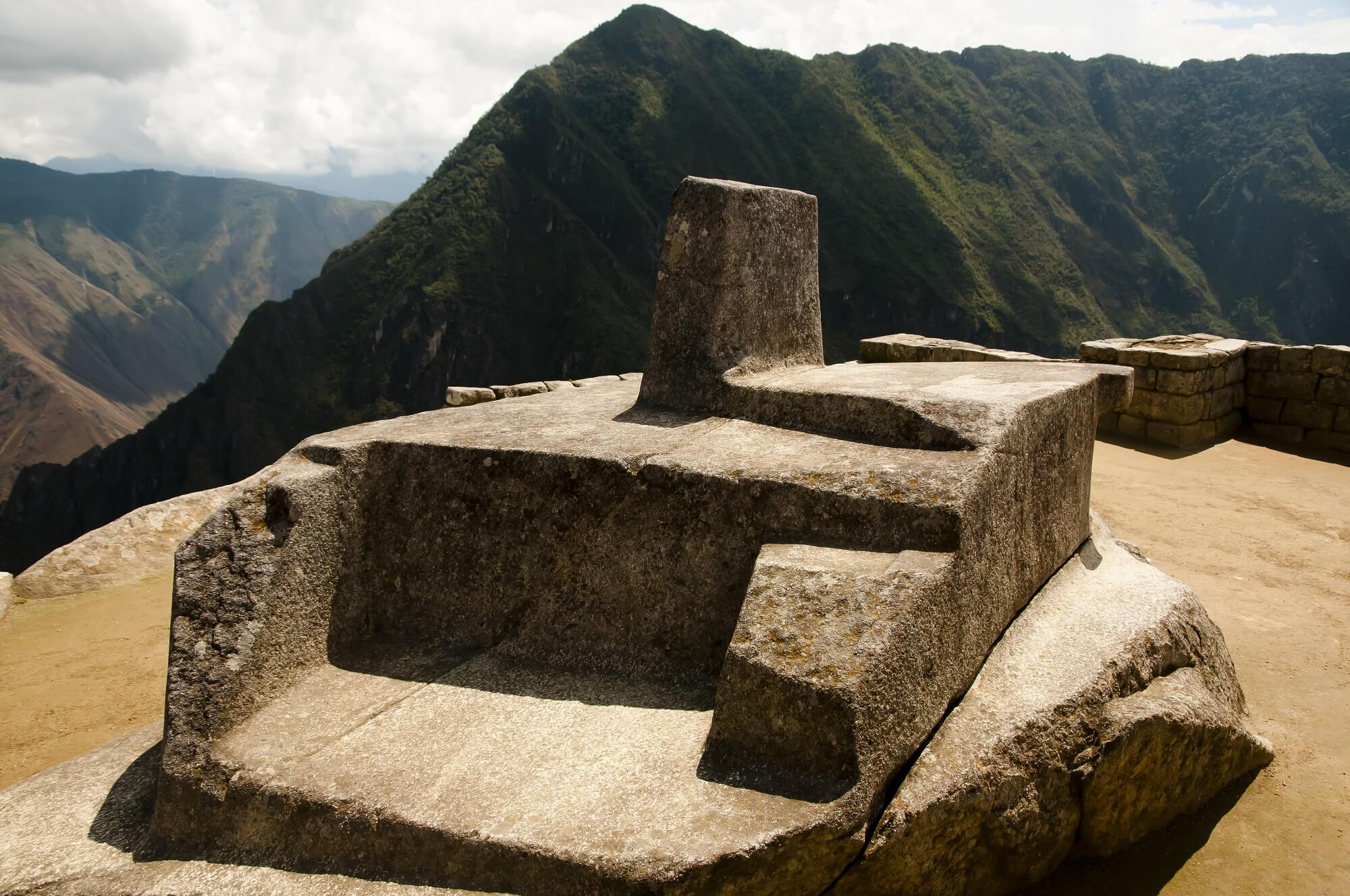
At Machu Picchu, the Intihuatana altar was used to celebrate the sun throughout the year.
The agricultural sections are made up of terraced fields with channels that provided irrigation. There are hundreds of terraces, which you can see from a distance. Up close, you can see that an incredible amount of labor went into creating the terraces; not only were they built to promote proper drainage and minimize erosion, the rich topsoil was carried up from the valley below. Altogether, the terraced area covers 12 acres, which couldn’t grow enough produce to feed everyone who lived in the city so much of the food that was consumed there was imported.
Cost and Fees for Machu Picchu Tours
Machu Picchu travel costs vary widely depending on which experience you choose and what is included in your tour. In general, treks with large groups cost less than smaller, more private experiences. If you’d like to hire a private porter to carry your personal gear, plan to spend more.
Check to see what’s included in different travel packages, particularly if your plans for visiting Machu Picchu include a long trek. If any of the following features are not included, you may find yourself paying for a la carte services, which can quickly increase expenditures.
- Pickup from your hotel
- Transportation to the trek’s starting point
- Required entrance fees for Inca Trail and the historic site itself
- English-speaking guide (or a guide who speaks your primary language)
- Camping equipment including a tent and other essentials for making a long trek
- Food and a professional cook (note that many hikers opt to bring their own favorite snacks since most tours are tightly scheduled and between-meals snacks might not be provided)
- Porters who carry things like tents, food, equipment, first aid kits, oxygen canisters, portable toilets, etc.
- Bus ride down from the mountain to Aguas Calientes, where you can spend time relaxing in the hot springs after your long trek
- Return either by bus or train – some go to Ollantaytambo and then on to Cusco, while others offer a direct ride back to Cusco
- Transportation from the bus or train station back to your hotel
- Secure storage for other luggage that you won’t be bringing on your trek; this might be available from your hotel instead
If you’re not planning to trek to Machu Picchu, then you’ll find that while the train is the fastest, most efficient way to travel, taking a bus – either from Cusco to Machu Picchu or from Lima to Machu Picchu – is the cheapest way to get from point A to point B. You’ll probably meet others who are headed to the same place you are, and who knows? You might even strike up a new, rewarding friendship or two along the way.
Read all about the different ways to get to Machu Picchu in part two of our complete Machu Picchu travel guide.
Best time to visit Machu Picchu
It’s a question we hear frequently: When is the best time to go to Machu Picchu? The answer depends on your goals, the route you plan to take, and whether you enjoy rubbing shoulders with lots of other travelers or if you prefer a bit of solitude.
Since there’s less likelihood of rain, May through September are the most popular months for visiting Machu Picchu – this means these months are also the busiest. January and February are least popular since they are the wettest months and during February, the Inca Trail is closed for restoration projects.
Although January and February aren’t generally suitable for trekking, you can still visit the mountain; just know that you might be in for a very wet experience. If you’re hoping to avoid crowds and you’d like to stay relatively dry, consider visiting Machu Picchu in late April or anytime between the end of September and the beginning of November.
Machu Picchu Weather
Thanks to its location 13.164 degrees south of the equator as well as its elevation of 11,200 feet (3,300 feet lower than Cusco’s elevation), this amazing historic site has a milder climate than Cusco. Summers are wet and humid, while winters are dry and frosty. The rainiest months are October through March, with most rain falling between January and February.
Despite the ancient city’s height, Machu Picchu’s temperatures are moderate, and are mostly consistent throughout the year. Daily highs average 77 to 82 degrees Fahrenheit, and nightly lows are usually between 44 and 50 degrees Fahrenheit. Rain or drizzle is possible even during the dry season and most days are quite humid. If you’re visiting between May and September, plan for colder nights; during these months, temperatures can be freezing or even a little below freezing overnight. Pack carefully if you’re planning to camp overnight during these months.
Nearby Towns & Where to Stay
Most people stay in Cusco when visiting Machu Picchu, however it’s also possible to stay in Aguas Calientes or Ollantaytambo.
Accommodations Options
There are technically no Machu Picchu hotels, since the historic site isn’t open for commercial development. The good news is that you have several different lodging options ranging from luxury accommodations to a camping tent under the stars – and everything in between. Backpacking is a way of life in Cusco and there are plenty of affordable options. Hostel-style community rooms easily accommodate groups of friends and smaller rooms are perfect for solo travelers and couples.
What to Pack
Curious about what to wear to Machu Picchu? Look no further: Our packing list covers all the basics plus a few extras.
- Sleeping bag – If you’ll be doing a multi-day Machu Picchu trek, you will need a comfortable sleeping bag. Add a mat if you’re concerned about
- Pack – Pick a backpack with room for everything you need, and if you’re carrying your own sleeping bag, ensure that you choose one with outside attachments to accommodate your bedroll. Even if you’re not carrying your own equipment, you will need a daypack for essentials like water bottles, extra sunscreen, spare socks, etc. If your pack is new, break it in before your trip.
- Trekking Poles – Not necessary, but may be nice to have.
- Sunscreen – Bring more than you think you’ll need. The atmosphere is thinner and the sun is stronger at Machu Picchu elevation so even people with natural tans find themselves sunburnt. Choose something sweatproof, maybe with built-in insect repellent.
- Insect repellent – While there aren’t as many bugs here as there are at lower altitudes, you’ll be glad you made room for bug spray.
- Comfortable, quick-drying pants – enough to see you through your trek. If you can wear your pants more than once, you’ll find that you save quite a bit of space. If you’re not too worried about having pockets, consider fitness pants such as leggings or yoga pants. These are comfortable and can double as PJs, plus they dry quickly.
- Light tops that are suitable for layering – Because days are warm and humid, you’re probably going to be most comfortable with base layers made up of lightweight tanks or tees. Carry a warmer base layer to wear overnight and bring other lightweight layers to wear around camp and in case you encounter colder weather.
- Underwear – Bring enough to have a clean set every day of the trip, plus a couple of spare pairs just in case you need them.
- Fleece jacket or hoodie – You probably won’t need this at all during the daytime, but once the sun goes down and temperatures drop, you’ll be glad you brought it along. Fleece is ideal since it dries quickly.
- Gloves, hat, and other cold weather essentials – Depending on the time of year when you’re planning to visit as well as if you’re trekking and camping, you might need mittens, gloves, and a warm hat to wear at night when temperatures drop. Sleeping in a hat and mittens might seem strange but this is a great way to preserve your body heat and get the rest you need before continuing on with your journey the next morning.
- Rain jacket with hood – Even in the dry season, there’s a chance of rain. Choose something lightweight and water-resistant.
- Poncho – You may want to pack a lightweight plastic poncho in case you encounter rain but it’s too warm to wear your jacket.
- Appropriate footwear – Visiting Machu Picchu calls for lots of climbing over rocky surfaces and it’s likely that you’ll encounter more than a little bit of mud along the way. Choose comfortable hiking boots or shoes, or if you prefer, opt for a pair of trail running shoes. Pick something lightweight and water-resistant, and consider carrying a spare pair of durable shoes in your pack in case you have trouble with your primary footwear. Add a pair of sandals for relaxing in the evening and you’ll be all set. Be sure to put plenty of miles on your shoes before hiking Machu Picchu in them.
- Socks – Dry feet are happy feet, particularly when you’re climbing Machu Picchu. Bring at least one pair of socks to wear each day of your trek and a clean pair to change into when you reach camp at the end of the day.
- Blister prevention – Even if your footwear is well-broken in, blisters are a possibility on a long trek. Wearing protective patches or using a specially formulated blister prevention cream can be a real lifesaver.
- Toiletries – What to bring depends on your needs and the length of your Machu Picchu hike. At a minimum, consider bringing wet wipes, lip balm, toothpaste and a toothbrush, dental floss, and anything else your tour company recommends.
- Bathing Suit – The hot springs at Aguas Calientes is a favorite stop when visiting Machu Picchu, so save a little room in your bag for a bathing suit.
- Camera – Bring your favorite camera and make sure you have an extra memory card or two, depending on how many photos you think you’ll take and how long your trip will be.
- Other outfits – While you’ll only bring a certain number of items along on your trek, be sure to pack other outfits in your luggage so that you’ll be ready for fun and adventure before and after visiting Machu Picchu itself. Lima, Cusco, Arequipa, Huaraz, and other Peruvian cities are known for having fun nightlife scenes, nice restaurants, and other attractions that call for dressing up just a bit. Many women find themselves shopping for dresses when they find out how much fun the Lima club scene is, and guys often wish they had brought at least one collared shirt along! Pack something a little nicer if you think you’ll be going out at all and you’ll be able to skip the extra shopping trip. As for jewelry, pack your favorite costume jewelry or pick something up locally. There are many artisans in Peru and jewelry is the perfect keepsake.
Machu Picchu Facts & FAQ
Q: How high is Machu Picchu?
A: Machu Picchu elevation is 7,972 feet.
Q: Where exactly is Machu Picchu Peru located?
A: The site is 13.164 degrees south of the equator, 50 miles northwest of Cusco.
Q: How old is Machu Picchu?
A: The site was probably built in the 1450s, making it approximately 570 years old.
Q: How long is the hike to Machu Picchu?
A: There are a few different routes to take including the Inca Trail and the Short Inca Trail hike. Most people opt for a one- or two-day trek although a longer 5-day, 4-night Inca / Salkantay Trail combination trek is available. For the most intrepid of adventurers, longer journeys including the Choquequirao trek and the Vilcabamba trek offer longer, more intense experiences.
Q: How long should I spend on my trip, i.e. how many days in Machu Picchu?
A: It depends on your goals. Since it takes most people some time to acclimate to the altitude when the reach Cusco, it’s a good idea to plan for at least a week – and that is if you aren’t trekking. The longer you can spend here, the more you’ll be able to experience. Plan for a day or two of downtime in Cusco after your trek if possible; you’ll appreciate having the opportunity to rest and relax after this amazing adventure!
Q: How much does it cost to go to Machu Picchu?
A: Costs vary depending on whether you’re trekking, riding the bus, or taking the train. The price of Machu Picchu tickets varies too, depending on what you plan to do and see; for adults, prices are currently between $70 and $86. Students and children receive a discount, with prices currently between $41 and $57. Some tickets include the site only, while others include the mountain, Huayna Picchu, or the museum.
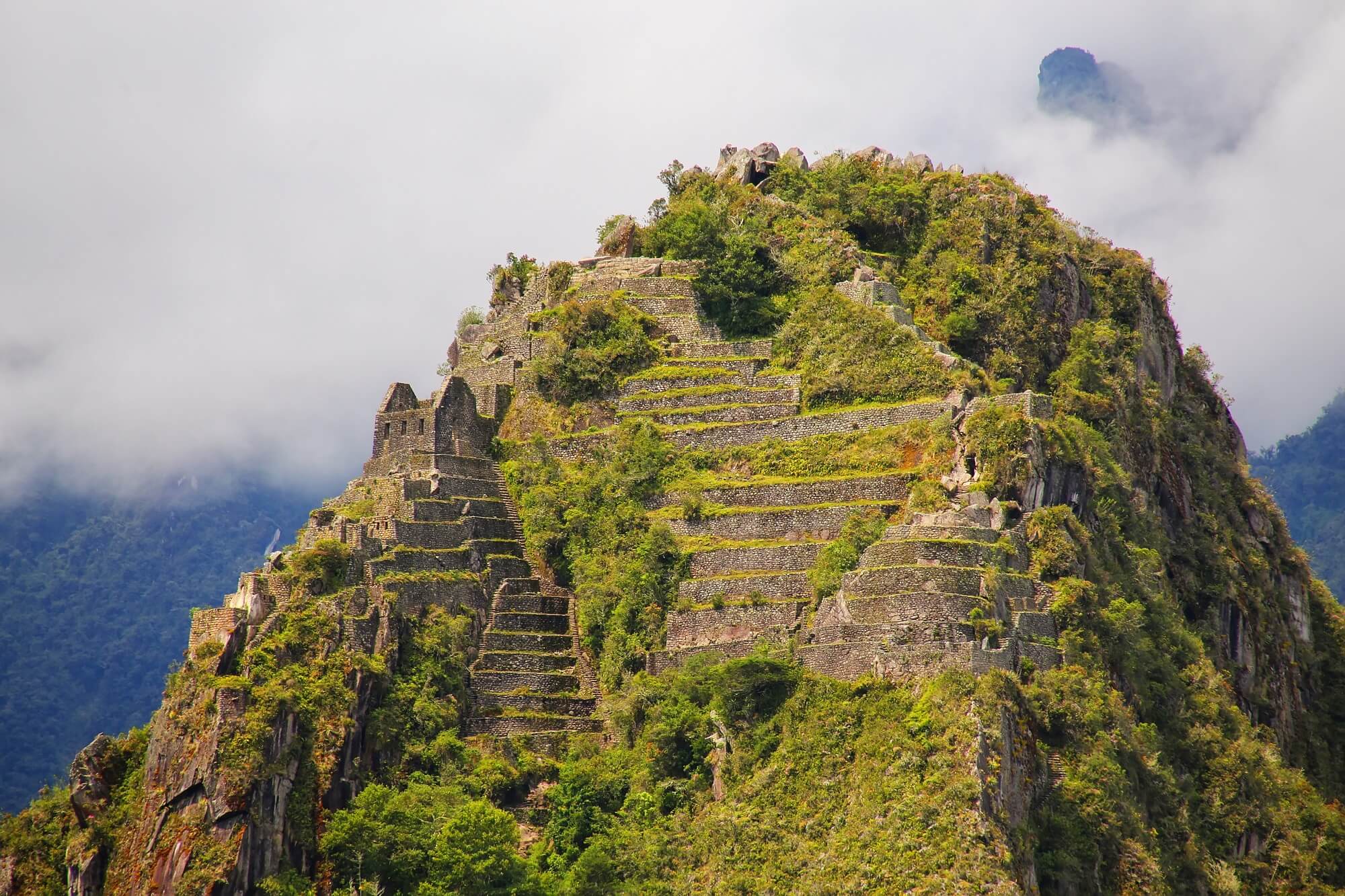
For amazing views, add Huayna Picchu access to your Machu Picchu ticket.
Other Things to Do in the Area
While climbing Machu Picchu is definitely the main event, there are many other adventures to be had in the area. In Cusco, which is the historic capital of the Incan empire, you can visit the Sacsayhuaman ruins. This pre-Incan mountain fortress features massive walls spanning some 1,500 feet and measuring more than fifty feet wide. Inside, a paved area features a circular stone monument that historians believe to be an ancient solar calendar, and which is nicknamed “The Eye of the Jaguar.” Other prominent features include underground chambers, huge ramps, towers, and an incredible water reservoir that was capable of storing up to 500,000 gallons of water. The terraced walls of the Sacsayhuaman ruins are believed to represent a jaguar’s teeth, which is intriguing considering the fact that the ancient city of Cuzco was built to resemble the shape of a jaguar.
Today, Cuzco retains an air of intrigue and history is everywhere you look. It’s not all seriousness, though: This is a fun town with plenty of markets to explore, wonderful restaurants, and a great nightlife. From here you can tour Matinal city and Tarde-Rasgos city, plus you can take a day trip to the salt mines of Maras and the terrace of Moray. You can also take a tour of the Sacred Valley and if you feel like more climbing, you can set out for another adventure by touring Rainbow Mountain.
Conclusion
Once you’ve decided on the best time to visit Machu Picchu, it’s time to check for availability. At Selina, we offer a few different tour options along with comfortable, affordable accommodations and a variety of adventures throughout the area surrounding this hidden Wonder of the World. Check availability and view current pricing for traveler-friendly dorms, private rooms, suites, and of course tours to Machu Picchu.
There’s More to Explore!
Visiting Machu Picchu is a pinnacle experience – one you’ll always remember as the adventure of a lifetime. If you have time to venture further, you’ll find more wonders waiting around Cusco and beyond.
While you’re in Lima, take time out for city-centered fun, surfing, and some beach time or take a step back in time and tour the Pre-Inca ruins at San Isidro or the Sacred City of Pachacamac archaeological complex. For a look at one of the world’s deepest canyons, consider a trip to Arequipa, where you’ll find Colco Canyon and three volcanoes, plus opportunities for rafting, flamingo encounters, and exhilarating downhill mountain biking. If you’d like to venture higher, make your way to Huaraz, the Trekking Capital of Latin America. This is home to Huascaran, the highest peak in Peru – additionally, it’s got fantastic kayaking as well as tours through the Pre-Incan Chavin civilization ruins. With so much to explore, the options are endless. A world of wonders is waiting!

